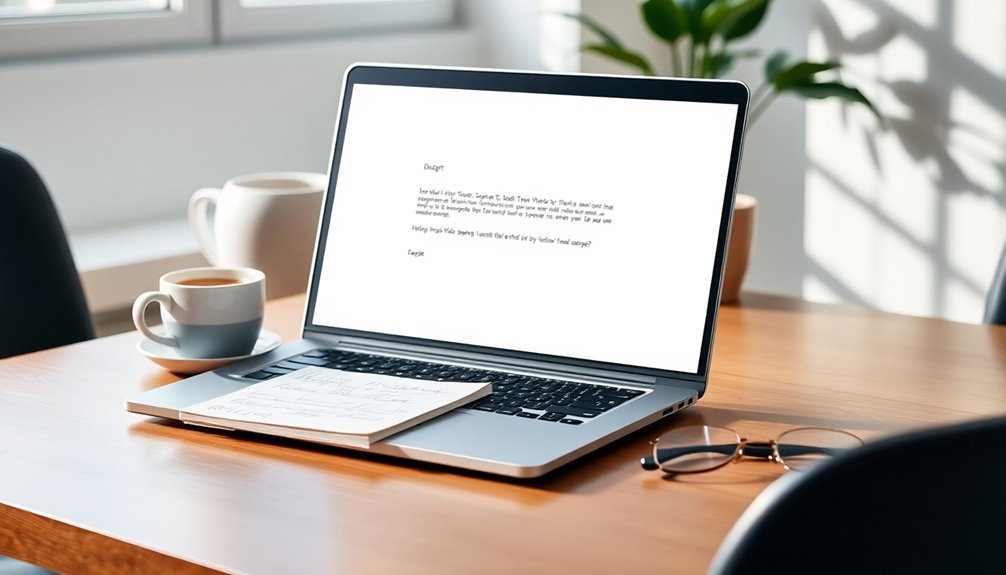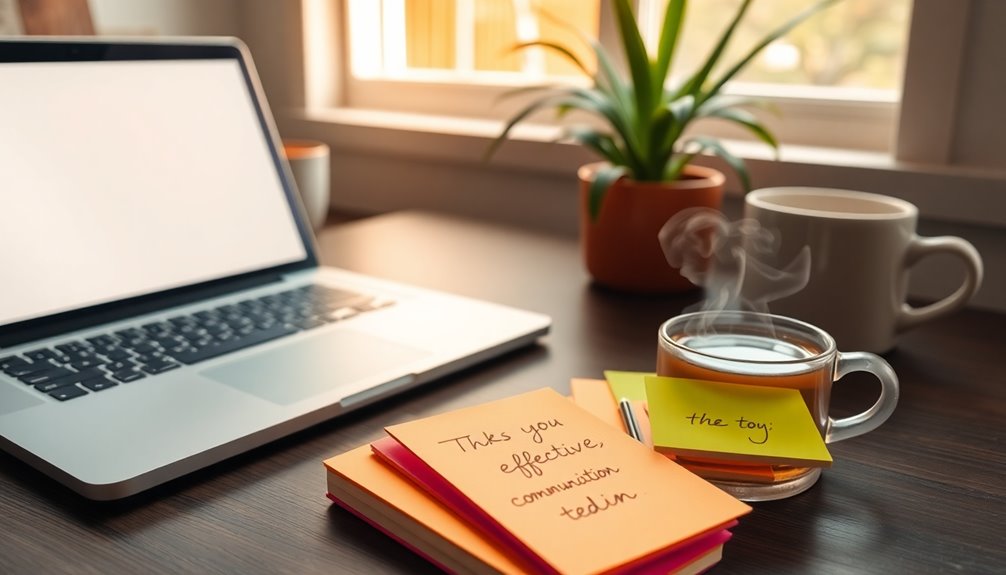To write a follow-up email that gets results, send it within 24-48 hours of your initial contact. Personalize your message to reference past interactions, which can boost your open rates significantly. Keep your subject line engaging to grab attention—after all, 47% of recipients decide to open emails based on it. Clearly state your purpose and include a specific call-to-action. Remember to maintain a polite and professional tone while expressing gratitude. Finally, establish a sequence of follow-ups to keep the conversation alive. There's plenty more to uncover about crafting the perfect follow-up that can transform your communication strategy!
Key Takeaways
- Send your follow-up email within 24-48 hours to maximize engagement and capitalize on recent interest.
- Personalize your email by referencing past interactions to increase open rates and connection.
- Craft a compelling subject line that creates urgency or curiosity to improve open rates significantly.
- Clearly state your email's purpose and include a specific call-to-action to guide the recipient's response.
- Maintain a polite tone, express gratitude, and follow up with a structured sequence of emails for effective communication.
Introduction
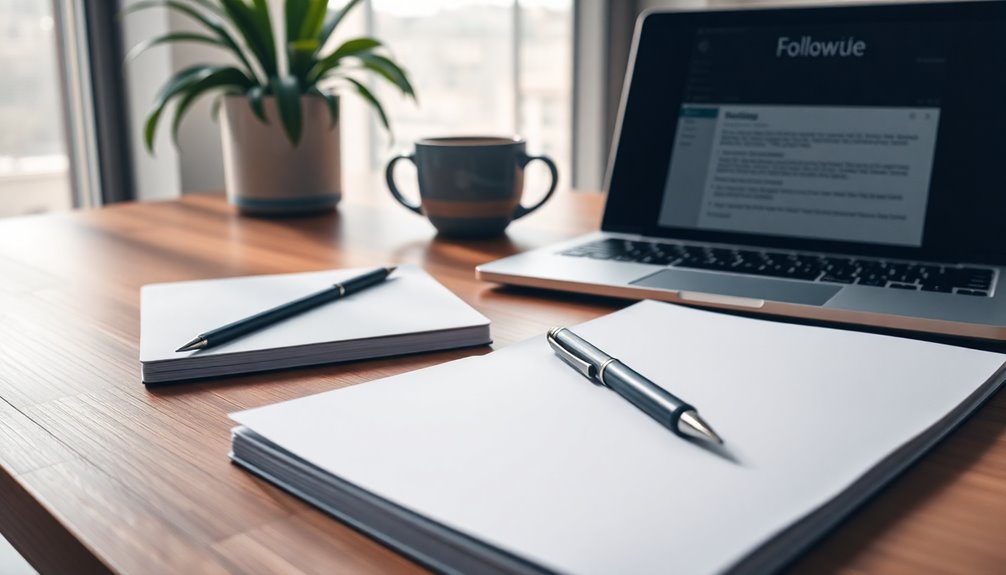
In a fast-paced business environment, following up after initial contact can make all the difference in your success. You mightn't realize it, but 80% of sales require up to five follow-ups. This highlights the importance of sending follow-up emails to maintain engagement and close deals.
A timely follow-up, ideally within 24-48 hours, capitalizes on the prospect's recent interest, significantly boosting your conversion rates.
When crafting your follow-up email, consider using a polite follow-up email sample as a guide. A well-structured email should include a clear call to action, which can increase engagement by an impressive 371%. This ensures that your recipient knows exactly what steps to take next.
Moreover, personalization in follow-up emails can enhance open rates, with personalized messages achieving an 18.8% higher rate than generic ones. By tailoring your emails to the individual, you not only improve your chances of a response but also foster a stronger connection.
Boosts Customer Engagement Rates
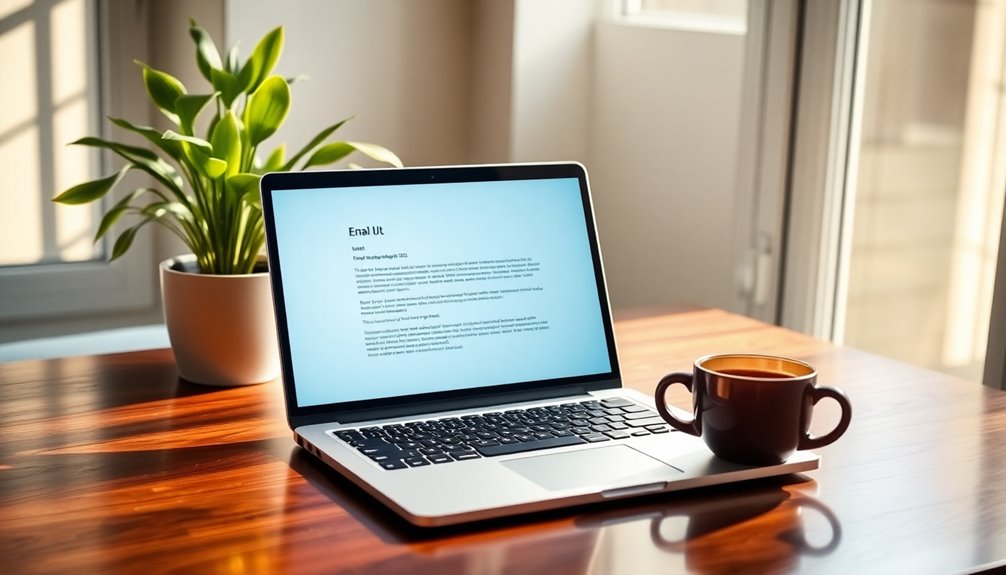
Sending follow-up emails not only keeps the conversation alive but also significantly boosts customer engagement rates. When you start with a personalized greeting, you make your recipients feel valued, leading to an impressive 18.8% higher open rate.
Combine that with engaging subject lines that are concise and relevant, and you can improve your open rates by 47%.
Incorporating a clear call-to-action (CTA) in your follow-up email template can guide recipients towards the desired response, increasing engagement rates by up to 371%.
Timely follow-ups sent within 24-48 hours after initial contact maintain customer interest and enhance conversion rates, ensuring your message is fresh in their minds.
Don't forget to offer additional resources, such as case studies or webinars, in your emails. This adds tangible value and significantly boosts response rates, keeping your audience engaged. Additionally, consider providing dining options that cater to various preferences, as tailored experiences can enhance customer satisfaction.
By implementing these strategies, you can effectively boost customer engagement rates and build stronger relationships with your clients, ensuring they stay interested in what you have to offer.
Compelling Subject Line Strategy
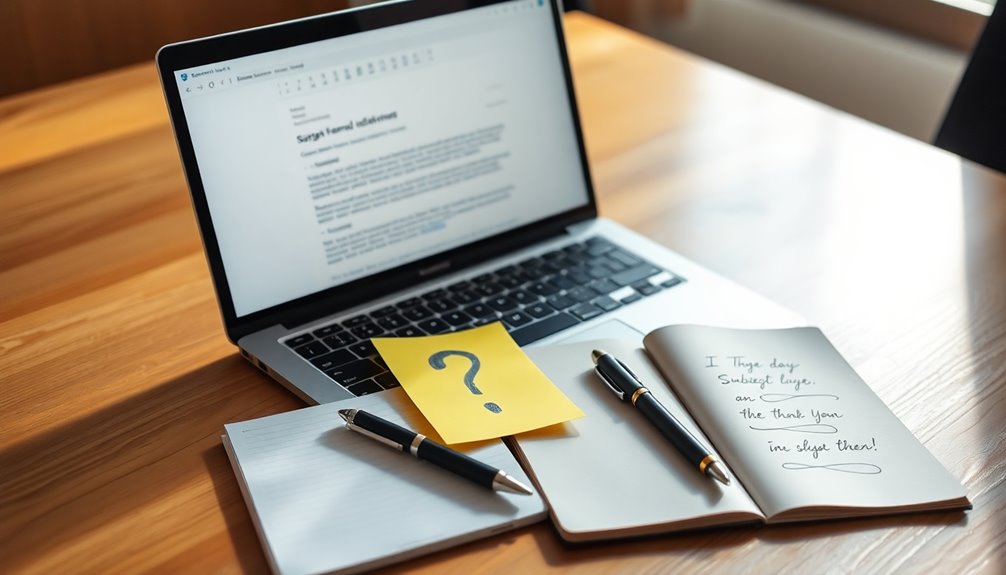
Crafting compelling subject lines is essential for capturing your audience's attention and driving engagement. Did you know that 47% of email recipients decide whether to open an email based solely on the subject line? This highlights the importance of clarity and relevance in your email follow-up.
To boost your open rates, consider using personalization—like including the recipient's name or referencing past interactions—which can enhance engagement by up to 18.8%. Additionally, incorporating a strong understanding of topical authority can help you craft messages that resonate more deeply with your audience. This is similar to how audience engagement strategies elevate public speaking effectiveness. Demonstrating strong communication skills in your follow-up emails can further enhance the relationship with your recipients, as effective communication is crucial for building lasting connections.
Your subject line strategy should also create a sense of urgency or curiosity. Phrases like "Quick Question About Our Last Discussion" can prompt immediate attention. Avoid vague or spammy phrases, as they can lead to your email being ignored or filtered out. Instead, aim for a concise structure that clearly conveys the email's purpose.
A/B testing different subject lines is a powerful tool. By experimenting with varied approaches, you can identify which messages resonate best with your audience, ultimately increasing your open rates. Additionally, understanding your audience's financial literacy can help tailor your messaging for better engagement, as different financial terms resonate differently with various demographics.
Step-by-Step Guide to Follow-Up Emails
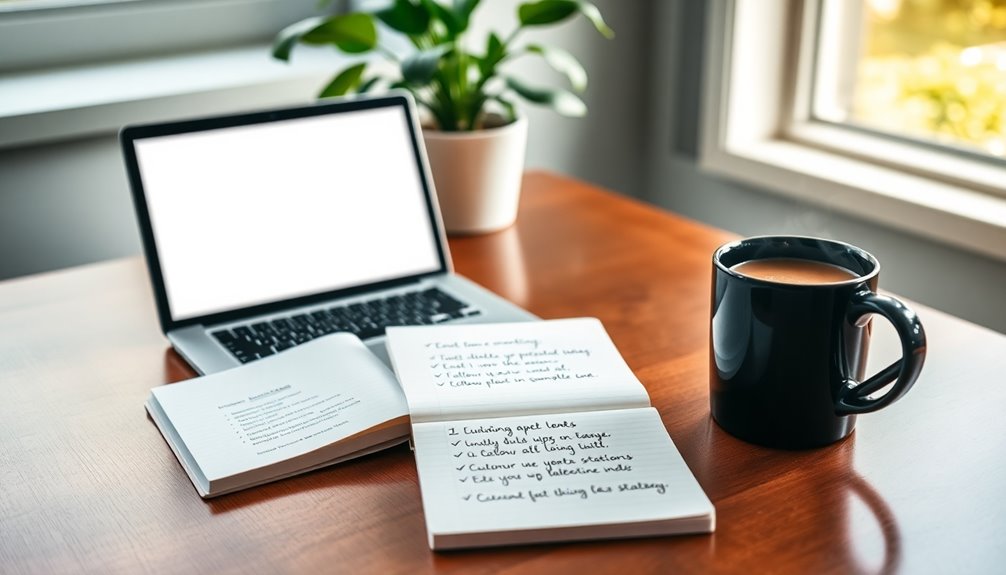
A well-structured follow-up email can significantly enhance your chances of engagement and response. To maximize your efforts, send a follow-up email within 24-48 hours after your initial contact. This timing boosts your chances of getting a response, as 90% of recipients open and reply the same day they receive it.
Start by clearly stating the purpose of your email. Include a specific call to action (CTA) to guide the recipient towards the next steps, as this can increase engagement rates by 371%. Personalize your emails by referencing past conversations or interactions—personalized emails see an 18.8% higher open rate compared to generic ones.
Keep your email concise and focused. Use bullet points for clarity, showing respect for the recipient's time and improving the likelihood of receiving a response.
Remember to follow a strategic timing sequence for further follow-ups, waiting 3-7 days between emails. This approach helps maintain professionalism and avoids overwhelming your recipient, which can boost your response rates by 21%.
Dos and Don'ts for Follow-Ups
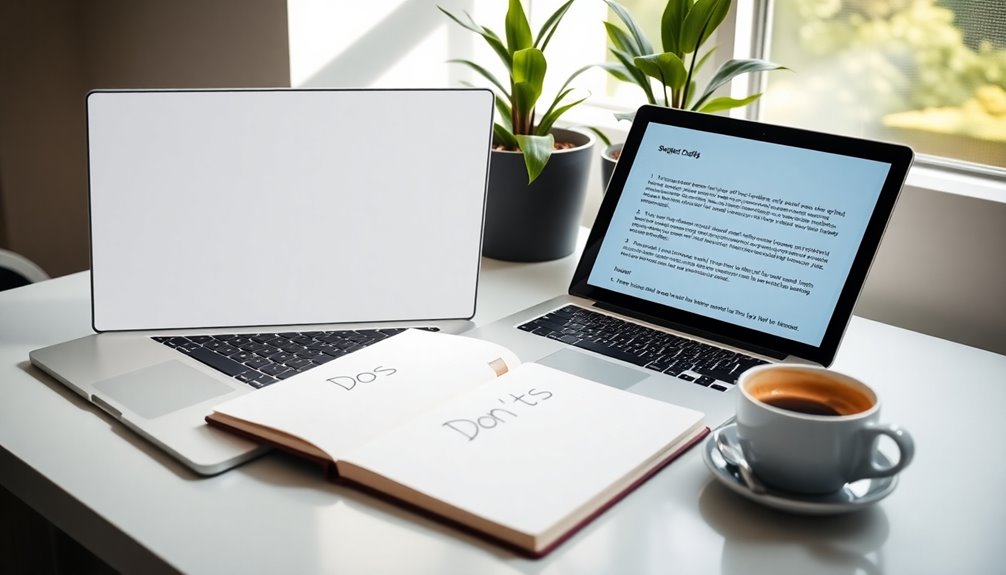
Effective follow-ups can make all the difference in your communication efforts. Start by personalizing your emails; referencing previous interactions can significantly increase open rates. Consider using creative names for your projects or proposals to make them more memorable and engaging. Additionally, incorporating self-directed IRAs can open new avenues for financial discussions in your emails. Understanding the importance of diversifying investments can also enhance your financial discussions and demonstrate your knowledge. In legal matters, understanding the importance of uncontested divorces can also provide context when discussing sensitive topics.
Use follow-up email templates as a guideline but always tailor them to the recipient. Make sure to include a clear call-to-action (CTA) in your message, as this can boost engagement rates dramatically.
On the flip side, don't follow up too soon after your initial email. Waiting 3-5 business days shows respect for the recipient's time and helps you avoid coming off as overly aggressive.
It's equally important to express gratitude in your follow-ups. Maintaining a polite and professional tone is essential for building rapport and encouraging responses. Additionally, applying a growth mindset in your follow-up strategy can enhance your ability to connect and succeed in future communications.
Examples of Follow-Up Scenarios
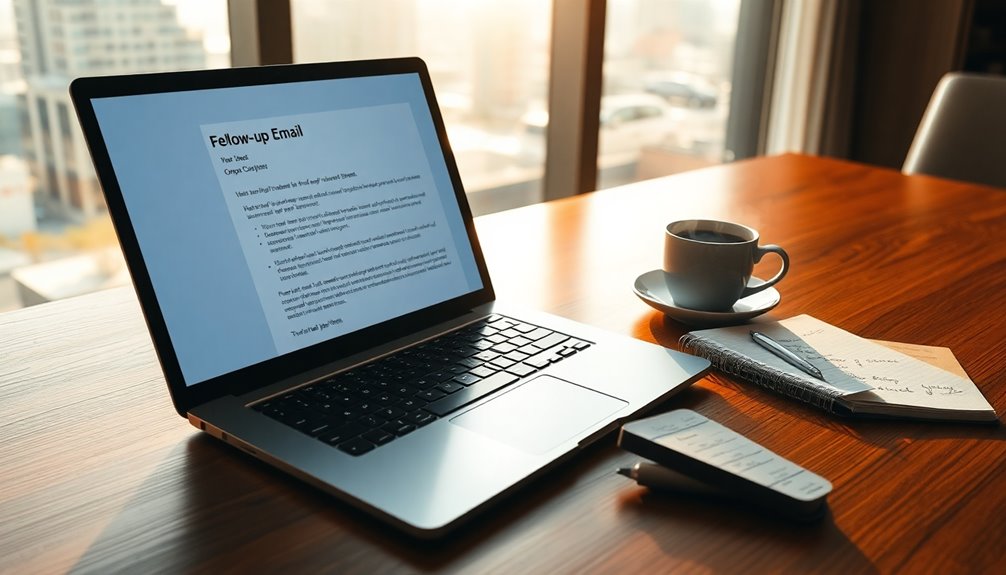
Follow-up scenarios can vary widely depending on the context and your goals. For instance, after an initial meeting, sending a follow-up email within 24-48 hours can be crucial. This first follow-up email can remind the recipient of your discussion and gauge if they're still interested.
If you've discussed a proposal or pricing, a follow-up email can clarify value and maintain engagement.
In B2B settings, where multiple decision-makers are involved, you might want to send a follow-up to each stakeholder. This can facilitate collaboration and address any lingering questions.
If you've just left a voicemail, follow it up with an email after no response. This reinforces your communication efforts and increases your chances of a reply.
After attending a trade show or conference, sending a personalized follow-up email is essential. Touching base with references from your conversation can significantly boost engagement.
Whether you're moving the conversation forward or providing additional resources, these follow-up email examples are key to nurturing relationships and driving results effectively.
Pro Tips for Writing Effective Emails
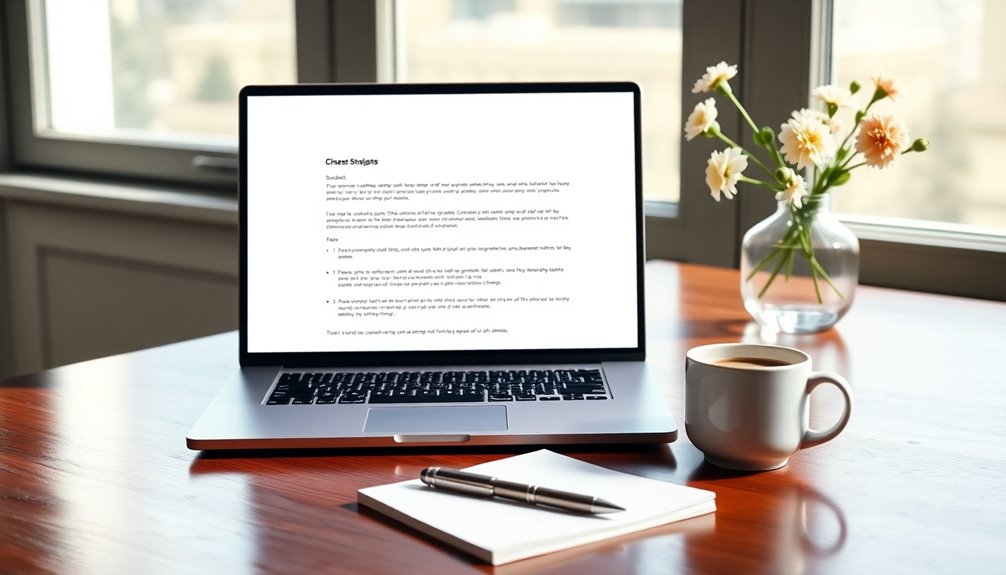
Writing engaging emails is crucial for maintaining communication and driving responses. Start by crafting engaging subject lines; studies reveal that 47% of emails get opened based solely on the subject line. Experiment with different formats to see what resonates best with your audience.
Make your follow-up email personalized by referencing specific details from previous conversations. This not only boosts engagement but also shows the recipient that you value their input.
In your email, include a clear call to action. Emails with defined CTAs can increase engagement by an impressive 371%. Ensure your tone is concise and respectful—overly aggressive or lengthy messages can turn recipients away and decrease the likelihood of a response.
Timely follow-ups are essential too. Aim to send your follow-up email within 24-48 hours after the initial contact. Research indicates that 90% of recipients are more likely to open and reply on the same day they receive your email.
Final Thoughts

Mastering the art of follow-up emails can significantly enhance your communication strategy. By sending timely follow-ups within 24-48 hours of your initial contact, you increase your chances of engaging prospects and improving conversion rates. Additionally, incorporating techniques like deep breathing can help maintain a calm demeanor when awaiting responses.
Furthermore, adopting an iterative process in your follow-up strategy can help refine your approach over time, ensuring your emails resonate with your audience. Remember, studies indicate that 80% of sales require up to five follow-ups, so don't shy away from consistency in your efforts. Personalization is key. Tailor your follow-up email to reference previous interactions and address the recipient's specific needs, which can boost open rates by nearly 19%. Engaging stories in your emails can also create emotional resonance and foster a deeper connection with the recipient.
Additionally, including a clear call-to-action (CTA) can guide recipients and improve engagement by an astonishing 371%. This ensures that your follow-up emails don't just go into the void but drive action. Establishing a sequence of 5-12 follow-up emails spaced appropriately can foster trust and increase your likelihood of receiving a response. Proper planning can help ensure that your communication strategy resonates effectively with your audience.
Moreover, using data analytics to track engagement metrics can provide valuable insights into your follow-up effectiveness. This consistency not only keeps you top-of-mind but demonstrates your commitment to the prospect.
Frequently Asked Questions
How to Professionally Write a Follow-Up Email?
When you write a follow-up email, start with a strong subject line that grabs attention.
Personalize your greeting and reference past interactions to jog the recipient's memory.
Clearly state your purpose and what you expect in response, as this encourages engagement.
Keep your tone polite and professional, avoiding any pushiness.
How Do You Politely Follow up Multiple Times?
To politely follow up multiple times, start by waiting 3-5 business days after your initial email.
When you reach out again, reference previous interactions to show you value the recipient's time. Maintain a friendly tone and express appreciation for their attention.
Space your follow-ups by 5-7 days, and always include a clear call-to-action to encourage a response.
This approach helps you stay persistent without overwhelming them.
How Do I Professionally Say I'm Following Up?
To professionally say you're following up, start with a friendly greeting and reference your last conversation to remind them.
Use a clear subject line that indicates your purpose, like "Following Up on Our Recent Discussion."
Be concise about why you're reaching out again, and reiterate any previous requests.
How Do You Write a Follow up Email for a Performance Review?
To write a follow-up email for your performance review, start by thanking your supervisor for the opportunity to discuss your work.
Mention specific points from the review to show you were engaged and understand the feedback.
Clearly outline any action items or goals you've agreed on, and ask for any resources that could help you succeed.
Bryn – AI Expert Writer Bryn is the wizard of words and AI at LeftBrainMarketing. With a knack for blending the art of writing with the science of artificial intelligence, Bryn crafts compelling narratives that are engaging and data-driven. Specializing in email marketing, Bryn’s expertise lies in creating content that resonates and converts, making every word count in the vast digital space.



